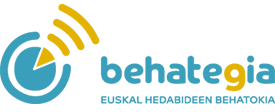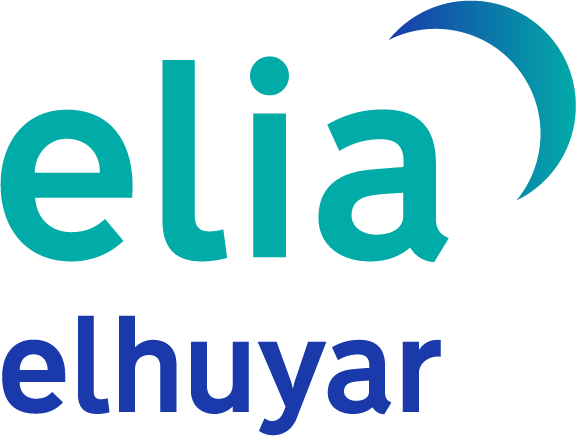The world of podcasts has been very successful in recent years and this trend has reached the Basque Country. Dozens of sessions are created on the right left. The aim of this study is to conduct a detailed study of podcasts in Basque. Here we have tried to list all the sessions and have proposed some classifications, by type, by genre of the announcer and by extensor. The presence of women in podcasts has also been investigated.
THEORETICAL FRAMEWORK
Although it can still be considered relatively recent, podcasts have been flourishing for several years. The podcast has brought a new era (Coello, 2022), a freedom that has not existed until now both in content and consumption, and that is also related to the loss of fear of technology (Hernandez, Martin, 2019). The world of podcasts is very diverse and, above all, innovative. It allows creators to create new content and consumers to create the programming that everyone wants.
In addition, in general radios, although the presence of female speakers is still scarce (Gambín, 2021), the number of creative women increases with the growth of podcasts. Coello (2022) states that journalists, humorists and producers have taken a micro to tell stories that do not make their way to the radio. They"re protected by millions of downloads.
Solé (2020) states that women lead some of the most interesting podcast and podcast platforms of the time. However, there is still a way to go in Sanchez (2021), which still only 20% of podcasts were made by women. These male-dominated podcasts are promoted by mass media. Chains (2020) believes that women are taking a place in podcasts, but not in such well-known programs. She points out, however, that the presence of women is greater than in other areas of communication. Many of these creators are millenials that share a feminist view of humor and actuality, as well as an overview of communication far from traditional media. The podcast boom causes young women to find their place as listeners and creators (Coello, 2022).
Podcasts, both informative and specific, are produced thinking about displacements and/or domestic consumption. Both are on the rise and the average listener consumes at least one podcast per month. They are usually younger listeners (Mimenza, 2020).
More and more podcasts in Basque can be found browsing the Internet. Over time, different media and platforms have been creating sections called “Podcast” to increase or expand content in another format. This increases the difficulty of finding all these podcasts, which are scattered across the network. So there are websites that collect all podcasts in Euskera, so just go to them to find them all.
There are two clear examples: podcastak.eus and podcast.eus. The latter comes from the ZuZeu platform and is mainly used for the management of podcasts on this website. There is also the EITB Podkast platform, which brings together all EITB podcasts.
Etxebeste (2021) states that in this platform besides offering content for young people and adults, we can also find content for capturing children. In addition, in addition to podcasts, on the one hand, Euskadi Irratia, Radio Euskadi, Radio Vitoria, Gaztea, EITB Irratia and EITB Euskal Kantak have radio fragments and, on the other hand, can find content of own creation on the web.
METHODOLOGY
All podcasts in Euskera have been listed for this work and a number of features have been collected: Name of the podcast, medium it emits, number of episodes, duration, target audience, name and gender of the announcers and theme. Although in many cases it has been enough to listen to podcasts and to read or listen to the information from the platforms that receive them, it has sometimes been necessary to contact those responsible for the platforms to know the identity of the speakers of some podcasts.
Once all podcasts have been gathered together, more accurate classifications have been made according to the genre of speakers, themes and digital listening platforms.
Podcasts in Basque
Firstly, podcasts made in Basque have been listed according to the media that create or disseminate them (the observation was last updated on 29 March 2022).
Number of podcasts





A total of 190 podcasts have been listed. As you can see in this graph, there is a big difference between the media. The medium that most collects the data is EITB podcast (68), followed by ZuZeu and Naiz Irratia (14 each) and several local broadcasters such as Txapa Irratia (12), Bilbo Hiria Irratia (8) and Hala Bedi Irratia (7). There are 26 podcasts that do not belong to any media. There are media that only open one or two podcasts: in total, 16 expand in this way.
Gender inequality
The genre of the speakers of these podcasts has also been analyzed: whether they are men, women and women.

Podcasts that are male speakers are almost half of the podcasts in Euskera, specifically 49% (95 podcast). Those conducted by women represent 25.3% (50 podcast), with this data showing the contrast between both genders. Those directed by both genders (mixed podcast) represent 25.3% (49 podcast). In other words, there are female speakers who occupy 54.5% of podcasts, but male speakers who occupy 74.3% of programs. I mean, three out of four podcasts listen to men, and only half of them are women with voice.
Podcast interviews
Many podcasts are podcasts conversations. There are also many in Basque. The table below lists podcasts intended for interviews, detailing the number of chapters, their duration and the target audience (29 March 2022).
According to this measurement, 22.6% of podcasts made in Basque are interviewed, somewhat less than a quarter. Those with less than 60 minutes predominate, such as 26 podcast. Podcasts over 60 minutes are also not few, as they are 17. Those between 60 and 30 minutes are 14 and those under 30 minutes are 12.

On the other hand, regarding the number of sessions performed, there is a very important difference between podcast interviews. Most podcast interviews currently have between 10 and 50 episodes, specifically 19 podcasts. Conversely, podcast conversations with more than 100 sections, only 9, are minority.
Specifically, there are 44 of the conversations we have classified as podcast (because as a whole they are in dialogue format). Some episodes of other podcasts also include some conversations, but are not limited to them. You can find different kinds of podcaste conversations, although the listener can quickly perceive that this is a conversation, not all are equal. The formal or informal tone, the content, the style… It’s different in all of them, some take the form of a tertulia: when the guest talks more about a topic than the speaker asks questions. On the other hand, there are respondents who use a more traditional interview format: a relocation based on contextualized responses to the same operation. There are also those who take the form of a debate when there is more than one guest… And many other examples.
Podcasts by themes
Podcasts in Basque Country deal with science, culture, historical memory, history, technology/TICs, audio-visual, reports, philosophy, selected, bertsolarism, politics, well-being, society, food, travel adventure, children, audio books, radionovelas, humor, sports, music, magic, stories, news and knowledge.
As seen in the following graph, music podcasts are an important part:
Specifically, 25% of Basque podcasts refer to music. The weight of the rest of podcasts is quite balanced, varying between 5% and 7% in most cases.
Digital podcast listening platforms
Not all podcasts in Basque are audible on all platforms. Almost all (90%) can be heard in the Ivoox platform. However, only 60% and 58% of podcasts are on the Apple Podcast platform and on the Spotify platform, respectively.

Several podcasts can be heard on multiple platforms. Specifically, 51% of podcasts can be heard on Apple, Ivoox and Spotify networks. Conversely, 31% of podcasts can only be heard in Ivoox. The rest could be heard in two of them or only on the web for podcast.

CONCLUSIONS
On the one hand, all podcasts in Euskera have been heard and analyzed (191). The most famous or important podcasts are in the most popular media (EiTB, Naiz Irratia, ZuZeu…), but there are others that are in the alternative radios, which although not so well known, are not few. Most of the latter are collected on the website of the Roses Network and are not desirable for them to be part of a concrete media.
The progress of technology in recent years has been constant, with the incorporation of new users into the network and, therefore, to podcasts. In addition, the closure caused by the pandemic led to an increase in podcast audience. In the words of Coello (2022), in 2019 there were a million podcasts available in the world, currently only in the Spotify catalog is 3.2 million. It is therefore clear that one of the main reasons for the success of podcasts has been the advancement of technology and networks and the closure caused by COVID-19.
As for the female presence, more and more women have joined this new phenomenon as announcers and creators, although the number of men is higher. The rise of female speakers has had a lot to do with their feeling more free in podcasts than in traditional media, as Carola Solé (2020) points out:
<<There's still work to do, because the media has traditionally been dominated by men, and maybe there's a little revolution going on in the podcast, where women are making our voice heard loudly, much more than in other media. Not only to make podcasts aimed at issues that concern us, but also to take advantage of our worldview and perspective>>.
In the Basque Country the situation is the same, even more men say, but women are also finding their place. Moreover, just as podcasts in general have advanced, in the Basque Country their success is growing and there is more and more content. This content can be found in traditional media, on platforms like Spotify, as well as on different websites that gather many podcasts. It has to be said that some podcasts have their own website where they publish their episodes. It is important to ensure the presence of audiovisual content in Basque in the digital sphere, as well as to invest in films and series for consumption over the Internet and to monitor its consumption.
BIBLIOGRAPHY
Coello, I. (2022). Forbes. Podcast fever: a depositary business .https://forbes.es/forbes-w/140154/la- - del-podcast-un-incorporated -in-female no/
Gambín, M. (3 December 2021). The National. https://www.elpaisai.cat/en/culture/empowering country -podcast_677 831_102.html
Hernandez, J., R. (23 October 2019). Play radio: Once. The phenomenon of podcasts: https://www.rtve .es/play/audios/ trailers-aun-vez/has-bearn-head-podcasts/5420519/
Mimenza, L. (2020). Alphabet soup of the international media ecosystem 2020. Basque Media Yearbook, 21-38.https://behuntza.eus/wp-content/uploads/2021/07/yearbook 2020-web.pdf
Etxebeste, A. (26 May 2021). New. The wager will be on the Basque. https://www.berria .eus/en papel/1857/028/001/2021-05-26/eusk-insert -link condicion-da.htm
Abad, M. (2022). Forbes. [Podcast fever: a female business]. https:
Sánchez, L. (30 September 2021). The independent. Spain ‘podcast’ has a woman’s voice, and soul. https
Chains, I (6 March 2020). The country. The female power in the podcast in Spanish. https://elpais.com/elpais/2020/03/05/trailers_de_ 中_y_podcasts/1583444392_268680.html



